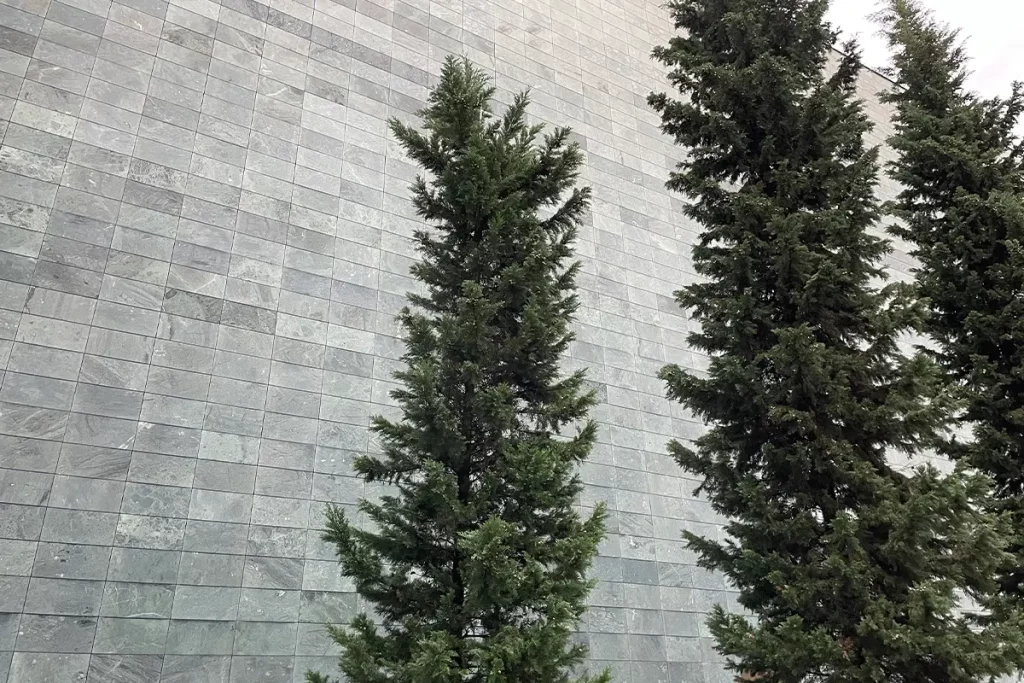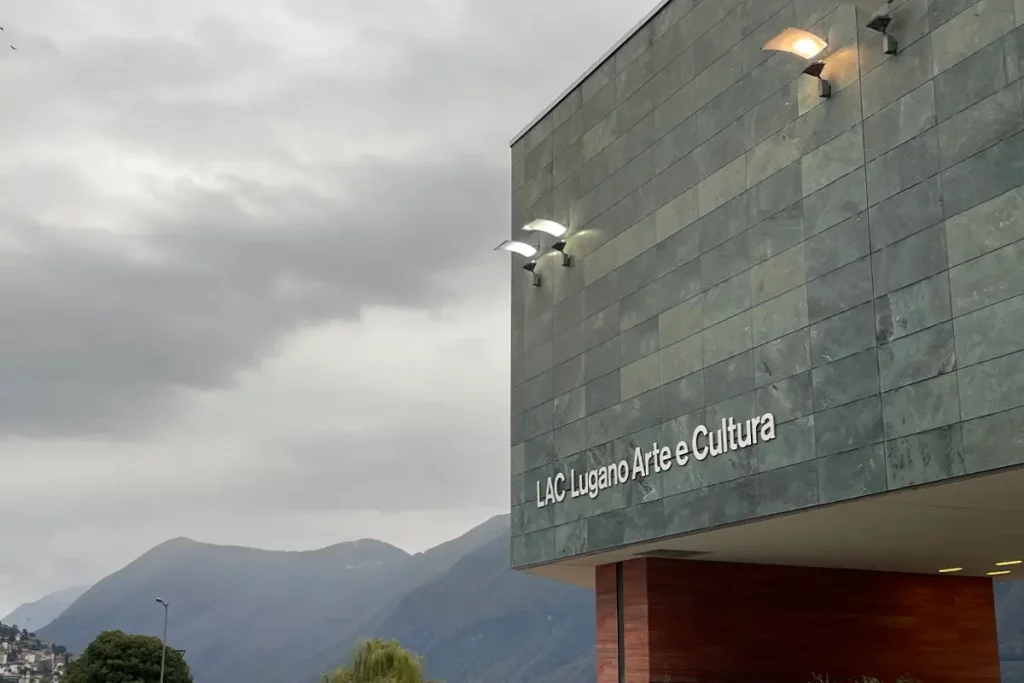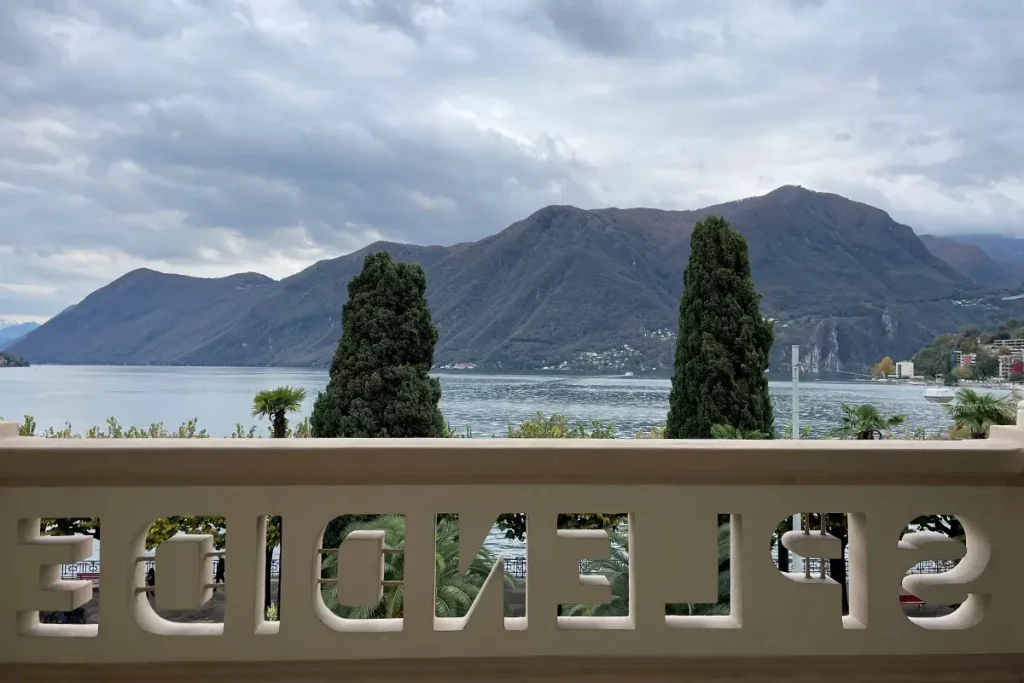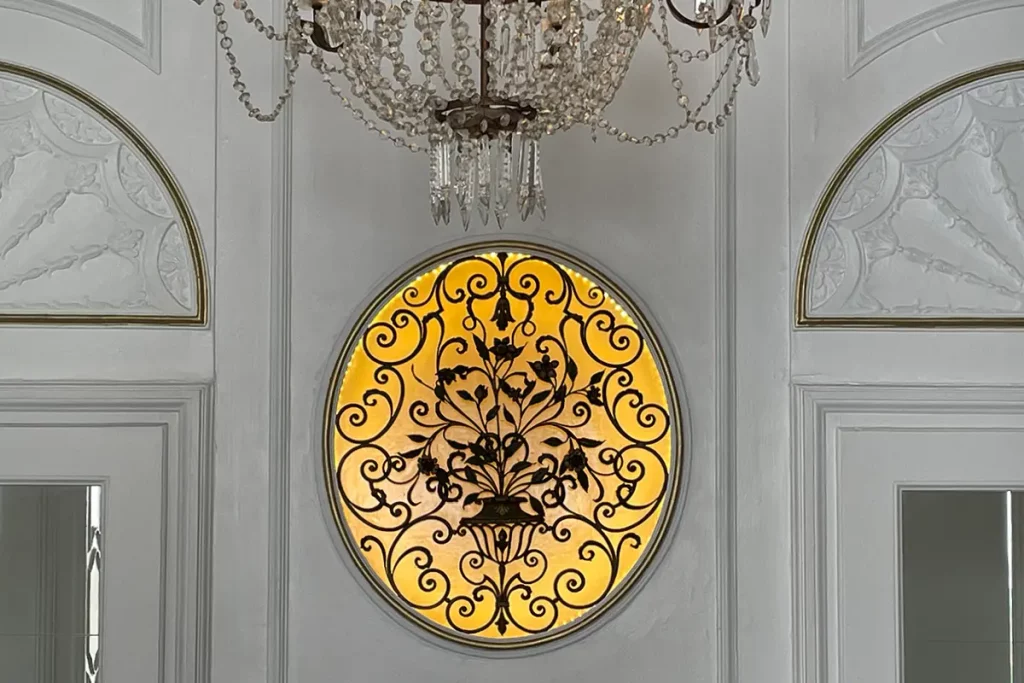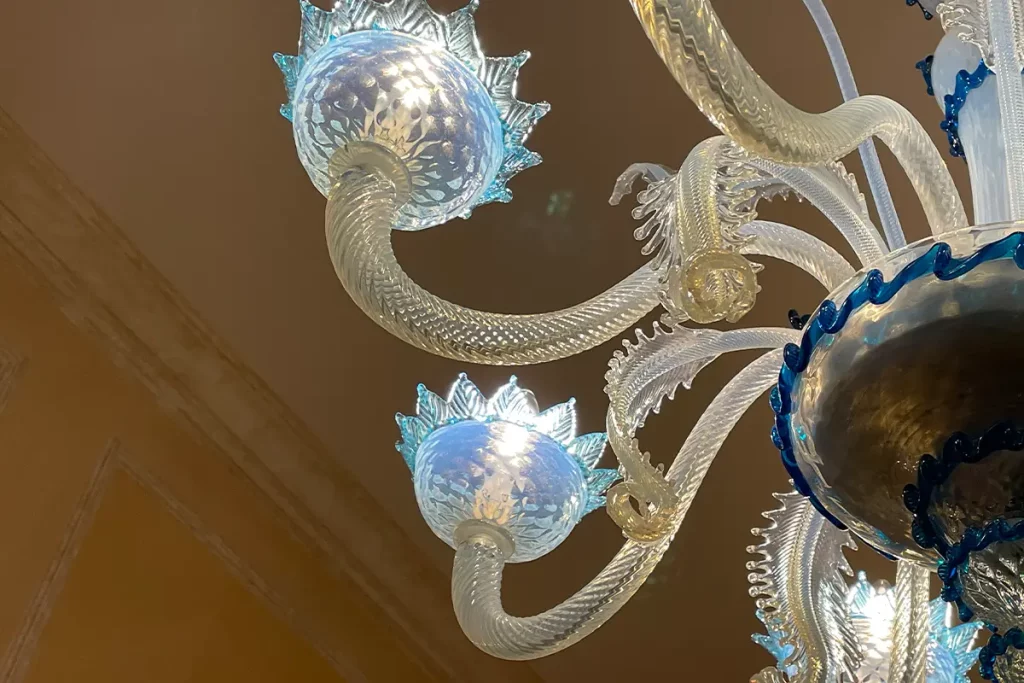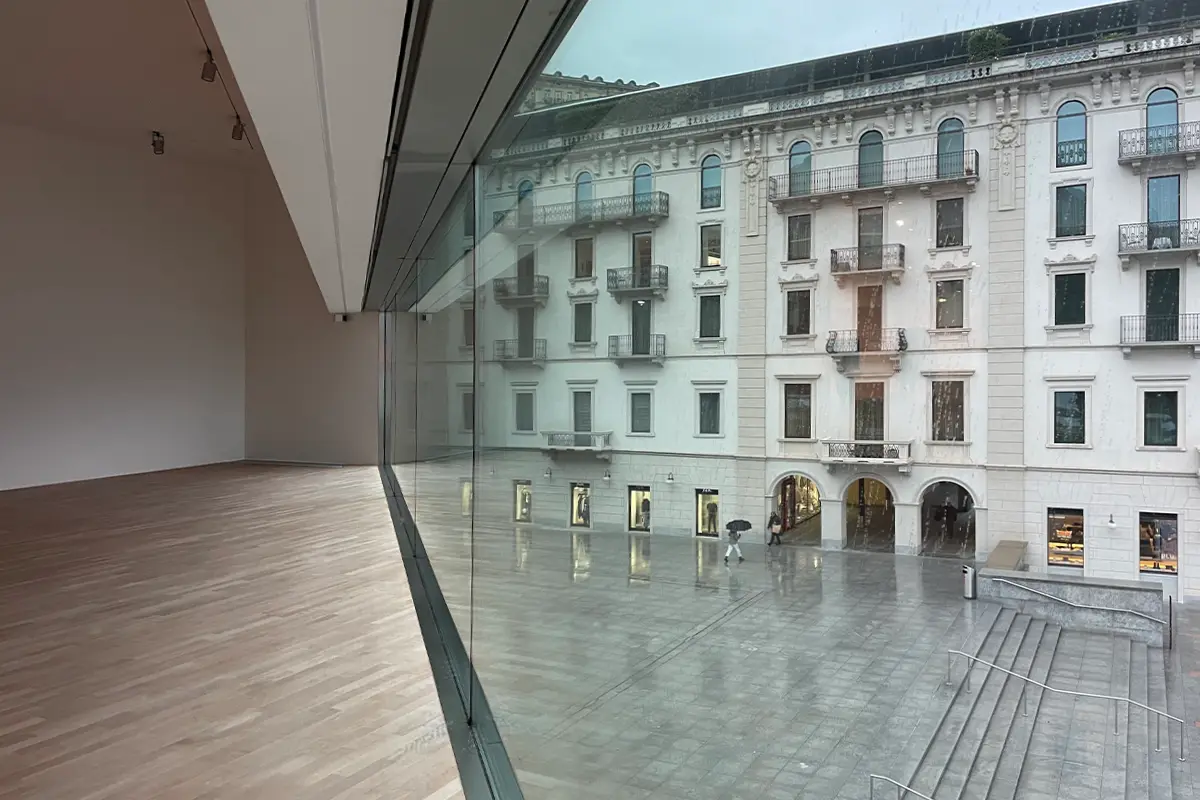From Renaissance church Santa Maria degli Angioli to the LAC and MASI contemporary art exhibitions: if you walk around Lugano you can stop to chat with the swans
The Lugano Region of Switzerland – activities for visitors, between culture and nature during fall
Lugano is located in the canton of Ticino, in southern Switzerland. It is the biggest city of the Italian-speaking area of the country, and it shares an international border with Italy. Lugano lies on its homonymous lake, at its largest width, where smaller villages are located.
Surrounded by the Prealps, the Lugano Region is a tourist destination all year round. Those who choose to immerse in nature and practice open-air activities may choose among nine hundred kilometers of hiking paths and four hundred kilometers of mountain bike trails. Culture lovers will find museums including the LAC (Lugano Art and Culture), a cultural center focusing on theatre, music, and visual arts – and swans.
MASI Lugano: a two-venue museum for Ticino art. An inclusive and accessible space dedicated to contemporary exhibitions
Inside the LAC contemporary building is one of the two MASI Lugano exhibition venues. MASI is the art museum of Italian Switzerland and hosts both a permanent collection and temporary shows. The LAC venue focuses on modern and contemporary art, while the other one – located in the historical building of Palazzo Reali – spans from the fourteenth century to the present.
MASI was born in 2015 as a result of the union between two preexisting museums, Museo Cantonale d’Arte and Museo d’Arte della Città di Lugano. The new-born museum is an inclusive and accessible place, with a variety of mediation activities in different languages. MASI also partners with the Giancarlo and Danna Olgiati Collection, dedicated to modern and contemporary art.
MASI Palazzo Reali presents exhibition paths that cyclically alternates artworks from the permanent collection, composed of over fourteen thousand pieces. This includes Ticino artists as well as Swiss and foreign ones, linked to Italian Switzerland. Now, on the first floor, are artworks and photographs by contemporary artists. The second one hosts exhibition Black or White, which showcases for the first-time new masterpieces of the collection, following the chromatic thread of the title.
LAC Lugano Art and Culture – the contemporary art building hosting MASI museum
At LAC, MASI currently features three different temporary shows. On the first floor, visitors can find Sentiment and observation. Art in Ticino 1850-1950. This exhibition reflects the double soul of the Canton of Ticino, with its Italian cultural identity on the one hand and its political affiliation with the Swiss federal state on the other. It follows the historical traces of late Romanticism, Realism, Impressionism and Post-Impressionism, to Symbolism, Expressionism, New Objectivity and Magic Realism, right up to the first blossoms of Surrealism. Its aim is to reflect on how the artistic panorama of the region has been shaped not only by local artists, but also international ones.
While on the second floor, From Albrecht Dürer to Andy Warhol leads visitors through an art tour across six centuries, exploring various engraving and drawing techniques. On the -2 level is Lake Maggiore, an exhibition of new works by Thomas Huber, which are the result of his return to Switzerland. Taking inspiration by the lake, his artworks portray a landscape in which mountains, water, sky, and light move according to the natural rhythm of the seasons and the progression of the day.
Santa Maria degli Angioli Church: the Last Supper of Lugano featuring Renaissance artworks by Bernardino Luini
Another spot to make sure to visit in Lugano is Santa Maria degli Angioli Renaissance church in Lugano. Characterized outside by a sober Romanesque style, inside it features a series of frescos by Bernardino Luini – a Renaissance Italian painter who was born in a village nearby Lake Maggiore and took care of the decoration of the church in 1529.
Located on Piazza Luini, the church was built between 1490 and 1515 as the abbey of a Franciscan monastery. It was divided into two parts, with two separate chapels and altars, one for the people and the other for the monks. In 1848, during Switzerland’s civil war, the monastery was disbanded and turned into a hotel. The church fell into disuse and disrepair. Finally, in the Twenties, the restoration process began, which brought back to light frescos, hidden for long behind wood paneling.
On the wall that separates the two sections of the church, arching to the inner chapel, Luini painted a large Passion and Crucifixion of Christ, with the addition of the martyrdom of Saint Sebastian. The scene also features a self-portrait of Luini himself, who put his face on the man riding a horse above the figure of a young Saint John.
On the south side wall of the church is Luini’s Last Supper. Divided into three panels, it reminds of the Leonardo da Vinci’s fresco, exhibited in Santa Maria delle Grazie in Milan. The resemblance between the two also includes the femininity of Saint John, the very detail that led to Dan Brown’s The DaVinci Code, which suggests that da Vinci had symbolically painted Mary Magdalene into his last supper in the guise of the apostle. Here, Luini represented himself as Judas Iscariot, with a bag on coins and his own favorite pet cat at his feet.
Hotel Splendide Royal Lugano – a historic venue attracting tourists from the 1880s embracing the concepts of sustainability and social responsibility
For a stay tourists can book a room or suite at the Splendide Royal, a historic five-star hotel overlooking the shores of Lake Ceresio. The history of this luxury hotel dates back to the 1880s, when the Gotthard railway tunnel through the Alps was inaugurated, marking the beginning of tourism development in Ticino.
In May 1887, Albino Guidi and Tranquillo Clerici decided to rent Villa Merlina, which was born around 1870 by Viglezio, a lawyer, and turn it into a hotel. Thus, the Splendide was born. In December of the same year, the hotel was acquired by Riccardo Fedele Gianella, flanked by his cousin Vincenzo Fedele. They expanded the building by adding two floors and doubling it in a northerly direction, to turn the villa into a palace.
The Splendide gradually became a favorite destination for figures of the world stage, including members of royal families. This is why, in 1959, ‘Royal’ became part of the hotel’s name. During the Twentieth century it was further renovated and enlarged, passing to the hands of the Naldi family.
With the advent of the new millennium, the Splendide began to pay attention to sustainability and social responsibility. In 2015 it founded a farm in Kenya, the Splendide Shamba, and in 2021 it obtained the Swisstainable certification.
Sass Café: raw-materials and short supply chains for an eno-gastronomic break in Piazza Riforma, between tradition and fine dining
Located in Piazza Riforma, Lugano’s central square, Sass Café offers a gourmet lunch or dinner break, accompanied by a selection of wines. Guests enter a ‘minimal’ environment, which aims at blending a traditional Ticino atmosphere with an international vision.
Head chef is Andrea Bertoni, whose mission guided by the motto «Downtown has more taste» is to reinterpret the flavors of the Ticino culinary tradition in a fine dining key. All the raw materials used in his receipts come from the local territory and short supply chains.
The Swiss banking sector and watch market – Lugano is the third largest financial center in Switzerland
Ticino plays a role in the Swiss banking sector. It all began in the second half of the nineteenth century, when the Gotthard tunnel boasted tourism in the region. In 1920, the ABT (Ticino Banking Association) was born, to broaden cooperation between banks and regulate their activities through agreements and conventions. After the Second World War, thanks to its strategical geographical position and the country’s economic stability and social peace, Lugano became the third largest financial center in Switzerland, after Zurich and Geneva.
Lugano is also a nerve center for the Swiss watch market. In October 2023, the Lugano Exhibition Center hosted the debut of SwissReLux, an open event dedicated to the reconditioned and collectible watch and vintage exchange. Here watch lovers can purchase pieces, meet in person with top dealers, have their items appraised and discover the last news and trends in the field. The next edition will take place from October 10 to 13, 2024.
Swans, lindens, and horse chestnuts: nature taking over the streets of Lugano in fall
Part of the fauna of the Lugano Lake are the swans, that during the last years have become the official mascots of the city. Indeed, it is likely to not only spot them inside or around the lake, but also literally walking in the city center streets.
A natural element of the Lugano cityscape are also the lindens and horse chestnuts that follow the promenade around the lake. A 2013 report speaks of 486 trees, including Tilia platyphyllos, Tilia euchlora and Aeschylus hippocastanum. Planted in double row, they separate the lake from the historic center, mediating between the stillness of the water and the activity of urban life.
Daiana Giorgi – research on fashion, archives and private collections
Currently based in Lugano are a series of renown names. One of them is Daiana Giorgi, founder of lifestyle fashion brand Frida. Giorgi believes that beauty will save the world if done gently. Frida searches for vintage clothes, accessories, jewelry, and interior décor around the world, and then reinvents them. «I have always believed in the tangible contribution that vintage can make to the circular economy of fashion, as well as in the added value it gives to everyone’s style, making it more daring and personal. Finally, coolness and environmental sustainability go hand in hand», states Giorgi.
Pietro Paolo Crocetta – hemp crystal, Lugano
Citizen of Lugano is also Pietro Paolo Crocetta, general manager of Hemp Crystal, a pharmaceutical company that developed a line of products of neurological and dermatological interest based on cannabinoids. Crocetta has been a world pioneer in the production of CBD in crystal from hemp for pharmaceutical application since 2014. Entrepreneur in energy, real estate, and agriculture, he has devoted a part of his career to the cultivation and transformation of hemp biomass. In Cerignola, with Bio Hemp Trade and Palma D’Oro, Crocetta inaugurated the first Italian industrial hemp processing plant. «With our plant, in addition to the raw material destined for construction, textiles and food, it will be possible to recover the waste dust that could be used for the realization of bio-enriched plastics or as a resin strengthening fiber and much more».
Lugano, Switzerland
Lugano is a Swiss city located in the canton of Ticino, in the southern Italian-speaking region of the country. It overlooks the Lugano Lake and is surrounded by the Prealps, sharing an international border with Italy.
Here, especially during the fall season, visitors can to go on walks around the lake, surrounded by linden and chestnut trees, wander through the city center with swans, to visit the MASI art museum and admire frescos in a Renaissance church, or be part of the Swiss luxury watches market. For a five-star stay, they can book an accommodation at Hotel Splendide Royal.
Debora Vitulano
